|
Tao Te Ching
THE TAOISM OF LAO TZU
|
Tao Te Ching
|
The Book
The Taoism of Lao Tzu Explained. The great Taoist philosophy classic by Lao Tzu translated, and each of the 81 chapters extensively commented. Click the image to see the book at Amazon (paid link). |
Return to Clarity
The small and the seemingly weak are what truly rule the universe. This we know quite well from modern science. The characteristics and behavior of matter is decided by its smallest components, found in quantum physics.
The weakest of the basic forces is gravity, but in the large scale of the universe its power is vast enough to subdue anything. The small is the core, and the weak is what endures.
When Lao Tzu states that the light is the key to clarity, we would like to think that he unknowingly refers to the importance of light and its speed in the theories of Einstein. That's hardly the case, although light has lately received significance beyond its symbolical use in ancient thought.
Light and Clarity
Light, kuang, may in Lao Tzu's use of it refer to Tao, the Way and the mother. Either it's the light in itself, or its patterns that can be found and examined in the light – when obstructions are removed and we are able to perceive the small. We need light to reach clarity.Actually, the word used for clarity, ming, can also mean light, as well as brightness, brilliance, and understanding. We might use the word insight. Its pictogram is a combination of the sign for the sun and that of the moon. That's just about all the significant light found in the world, at the days of Lao Tzu.
Kuang means light, ray, brightness, brilliance, and shine. Originally, its pictogram showed a man carrying fire, in the form of a torch or something similar. This image suggests the idea that light should be brought and used in order to bring clarity to what we examine. By bringing light we see the things as they are, and thereby we reach clarity.
Safe, Not Saved
Another part of this chapter is also complicated to interpret: "until your last days you will not be safe." Traditionally, the last word has been understood and translated as "saved." This is an idea that seems far more Christian than Taoist.In the 1990s, the oldest Tao Te Ching manuscript we have was found in Guodian. It dates back to around 300 BC. There, this sentence instead reads approximately: "you will not reach your last days," meaning that you will die before old age.
I settled for a compromise between the two, with the word "safe" instead of "saved." The meaning in the Guodian version and that of later versions meet somewhere there. If you open wide and meddle with your surroundings, you are at risk. That's true in many ways.
Sealing the openings and closing the doors can also be interpreted in several ways. Some claim that it points to the human senses, but Lao Tzu had enough humor also to imply the bodily cavities. Just like the soldier needs armor, every human being needs to take care and hold back, when appropriate. Also in our homes, there are many moments when we do best to keep our doors shut.
We should be careful with what we invite, and for what we open.
NEXT
Tao Te Ching Explained
Preface
Introduction
Literature
translated and explained by Stefan Stenudd.
1 |
2 |
3 |
4 |
5 |
6 |
7 |
8 |
9 |
10 |
11 |
12 |
13 |
14 |
15 |
16 |
17 |
18 |
19 |
20 |
21 |
22 |
23 |
24 |
25 |
26 |
27 |
28 |
29 |
30 |
31 |
32 |
33 |
34 |
35 |
36 |
37 |
38 |
39 |
40 |
41 |
42 |
43 |
44 |
45 |
46 |
47 |
48 |
49 |
50 |
51 |
52 |
53 |
54 |
55 |
56 |
57 |
58 |
59 |
60 |
61 |
62 |
63 |
64 |
65 |
66 |
67 |
68 |
69 |
70 |
71 |
72 |
73 |
74 |
75 |
76 |
77 |
78 |
79 |
80 |
81 |
Tao Te Ching Explained
James Legge's Tao Te Ching
Aleister Crowley's Tao Te Ching
The 1st Chapter of Tao Te Ching in 76 Versions
Lao Tzu — Legendary Author of Tao Te Ching
My Taoism BooksClick the image to see the book at Amazon (paid link).
The Taoism of Lao Tzu Explained. The great Taoist philosophy classic by Lao Tzu translated, and each of the 81 chapters extensively commented. |
About Cookies
My Other Websites:
I Ching Online
The 64 hexagrams of the Chinese classic I Ching and what they mean in divination. Try it online for free.
Qi Energy Exercises
The ancient Chinese life energy qi (chi) explained, with simple instructions on how to exercise it.
Life Energy
The many ancient and modern life force beliefs all over the world explained and compared.
Taoismen på svenska
Other Books by Stefan Stenudd
Click the image to see the book at Amazon (paid link).
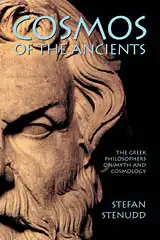 Cosmos of the Ancients
Cosmos of the Ancients
The Greek philosophers and what they thought about cosmology, myth, and the gods.
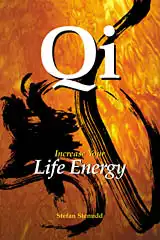 Qi — Increase Your Life Energy
Qi — Increase Your Life Energy
The life energy qi (also chi or ki) explained, with exercises on how to awaken, increase and use it.
 Aikido Principles
Aikido Principles
Basic concepts of the peaceful martial art. Aikido principles, philosophy, and fundamental ideas.
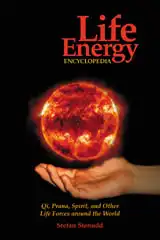 Life Energy Encyclopedia
Life Energy Encyclopedia
Qi, prana, spirit, ruach, pneuma, and many other life forces around the world explained and compared.
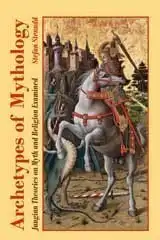 Archetypes of Mythology
Archetypes of Mythology
Jungian theories on myth and religion examined, from Carl G. Jung to Jordan B. Peterson.
 Stefan Stenudd
Stefan Stenudd
About me
I'm a Swedish author and aikido instructor. In addition to fiction, I've written books about Taoism and other East Asian traditions. I'm also an historian of ideas, researching ancient thought and mythology. Click the image to get to my personal website.Contact

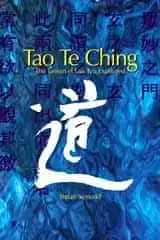 Tao Te Ching
Tao Te Ching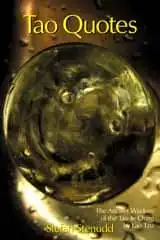 Tao Quotes
Tao Quotes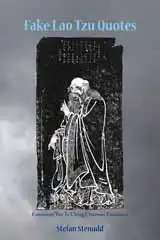 Fake Lao Tzu Quotes
Fake Lao Tzu Quotes